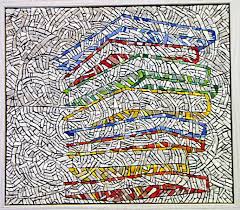Reading Success – Think of Spelling and Writing as Integrated Processes
 When students struggle with reading and literacy, it is imperative that their reading intervention go hand in hand with writing and explicit spelling instruction. Often, in the classroom, it is the case that spelling instruction is an after-thought and is confined to spelling drills and memorization (Birsh, 2005). However, for students who struggle with dyslexia or other reading difficulties, memorization and drills are not enough and engaging in traditional spelling activities does them a disservice. Read on to learn how spelling and writing are integrated into a Structured Literacy program and how it can help students who struggle with reading.
When students struggle with reading and literacy, it is imperative that their reading intervention go hand in hand with writing and explicit spelling instruction. Often, in the classroom, it is the case that spelling instruction is an after-thought and is confined to spelling drills and memorization (Birsh, 2005). However, for students who struggle with dyslexia or other reading difficulties, memorization and drills are not enough and engaging in traditional spelling activities does them a disservice. Read on to learn how spelling and writing are integrated into a Structured Literacy program and how it can help students who struggle with reading.
I will admit it, when I was a first and second-year teacher, I struggled with integrating spelling into my instruction in a meaningful way. If I am being completely honest, it took me a few years to understand the relationship between reading and spelling.
 I cringe thinking about some of my first parent/teacher conferences when I told parents “there is always spelling check.” I adopted the common classroom philosophy that if students were immersed in print, and taught to read, they would somehow magically learn to spell (Birsch, 2005).
I cringe thinking about some of my first parent/teacher conferences when I told parents “there is always spelling check.” I adopted the common classroom philosophy that if students were immersed in print, and taught to read, they would somehow magically learn to spell (Birsch, 2005).
After specialized training in how language is developed, I became a more proficient teacher and focused on direct literacy instruction. I found that spelling and writing are absolutely essential parts of the reading process. Students need explicit spelling and writing instruction in order to become proficient readers. In fact, research conducted by Brady and Moats in the mid to late 90’s indicated that learning to spell is a more complicated process than learning to read and requires explicit instruction (Birsch, 2005).

Without direct spelling instruction, many children will struggle to spell and ultimately to write even after their reading struggle has been remediated. Written expression is a necessary skill and needs to be explicitly taught in conjunction with reading skills. Students need to be taught about language and structure in order to learn to effectively spell and read words.
When engaging in spelling activities, the teacher or reading clinician must be an active participant and must be able to accurately impart knowledge about the rules of the English language. These include a deep knowledge of phonetics and phonics. Additionally, knowledge of orthography (conventional spelling rules and the representation of sounds as written symbols), morphology (prefixes, suffixes, and base word analysis), and vocabulary must be addressed during spelling instruction. These activities engage the student in a process that deciphers the reason for the spelling pattern rather than rote memory.
Many spelling difficulties arise when students are not able to accurately segment and blend the sounds in words. For example, if students do not understand that the word <tree> has three distinct sounds they cannot accurately spell it. An essential component of effective spelling instruction is the explicit teaching of phonemic awareness. When our reading clinicians at RW&C work with students, there is a phonemic awareness component to every single lesson whether students are working on letter sounds or advanced reading comprehension.

By ensuring that students can hear and manipulate sounds in syllables and words, our effective reading clinicians are making sure that students have and continue to develop the skills necessary to spell words correctly and express ideas in writing.
In addition, students need to understand the relationship between the sounds in words (phonemes) and the written symbols (graphemes). Our structured literacy lessons focus on this relationship with both reading and writing, helping students learn and internalize basic spelling patterns to complicated patterns.
Equally important, there should be a focus on morphology which is a critical component of any spelling program. Understanding root words and rules for prefixes and suffixes helps students understand spelling patterns. For example, looking at the word <business>, many people may wonder where the <i> comes from since it is silent. Understanding that the root word is <busy> and knowing that <y> changes to an <i> when adding a suffix (with the exception of a few orthographic rules) means that students will understand why the word is spelled the way it is and will help them internalize the spelling pattern.
By introducing, modeling, and practicing these skills explicitly, it helps students learn how to spell words correctly which improves and reinforces all literacy skills.
 Our reading clinicians also have extensive knowledge of child development and know when to correct spelling and when to allow children to rely on inventive spelling that is based on their own internalized understanding of phonemes and graphemes. This allows us to teach more than memorization because we teach the skills that students are developmentally ready for and not skills that are above their level. Just like in reading, in spelling it is “not the age, it’s the stage.” Students should not be pushed to memorize spelling patterns they are not ready for because it will ultimately do more harm than good.
Our reading clinicians also have extensive knowledge of child development and know when to correct spelling and when to allow children to rely on inventive spelling that is based on their own internalized understanding of phonemes and graphemes. This allows us to teach more than memorization because we teach the skills that students are developmentally ready for and not skills that are above their level. Just like in reading, in spelling it is “not the age, it’s the stage.” Students should not be pushed to memorize spelling patterns they are not ready for because it will ultimately do more harm than good.
Our online tutoring program integrates a multi-sensory approach to spelling according to the Structured Literacy framework. Students are engaged in looking, listening, repeating, segmenting, naming, and writing spelling patterns. Words are also integrated into phrases, sentences, and paragraphs to promote and develop further understanding. Research has shown this to be the most effective way to teach spelling and to integrate it into reading and overall literacy development (Birsch, 2005).
Spelling and writing are integral parts of literacy instruction and must be included systematically and explicitly in all literacy programs, especially those designed for students with dyslexia and other reading difficulties. While one may think direct and explicit spelling instruction is a distraction from content writing, it actually enhances it by empowering students to use a wider and more sophisticated vocabulary to describe their story rather than choose words that are easier to spell. If your child struggles with spelling, it is not a problem that will simply fix itself and will likely lead to other literacy difficulties down the road.
The important take away is that our English language spelling system is logical, makes sense, and is critical to reading and writing. Approximately 87% of English words are reliable to read and spell (Hanna et al., 1966) once the orthographic patterns have been mastered. However, for the novice or struggling speller, in order for the system to make sense it may take a Structured Literacy expert to help your child navigate the nuances of the English language.
Don’t wait for your child to struggle. Get them the help they need to be successful. Contact us today to discuss your child’s needs and find out if our online reading program is a good fit for you.
Becky Welsch
RW&C, LLC
www.rwc4reading.com
Becky Welsch has a Master’s degree in K-8 Education. She is certified to teach in the state of Arizona and has special endorsements in the areas of English Language Learners and Reading. Becky has worked with struggling readers in the primary as well as secondary grades. Her experience also includes intensive reading intervention both in person as well as with online teletherapy. Becky has experience with early literacy skills like phonics and phonemic awareness development. She has used several structured literacy programs including Language! and Spalding phonics. She is also trained to administer DIBELS tests and has worked with the DIBELS Next reading remediation program.
